Idea by
Renis Batalli
Call for ideas 2017
Flexibility as a Social Condenser
Flexibility as a Social Condenser

This project/idea starts with an analysis done on the parasitic architecture that happened in Tirana in the 90’s. The aim is to create a new style of building based on what happened before and trying to understand what might happen. The result will accomodate very needed change will not create chaotic situations but live in harmony with the environment.
The buildings in the city changed and they went through a process similar to the theories produced by movements like Metabolism. Form and function are not fixed. The overlapping of program layers and flexible activities that can be found in the Social Condenser theories. The result is a Hybrid building in terms of typology and function.
This type of building will give to the city a new model with costs savings, prefab building techniques, active user and new ways of socializing. The final shape is not important since there is no such thing. The building is in constant construction, and the key factor is the user needs.
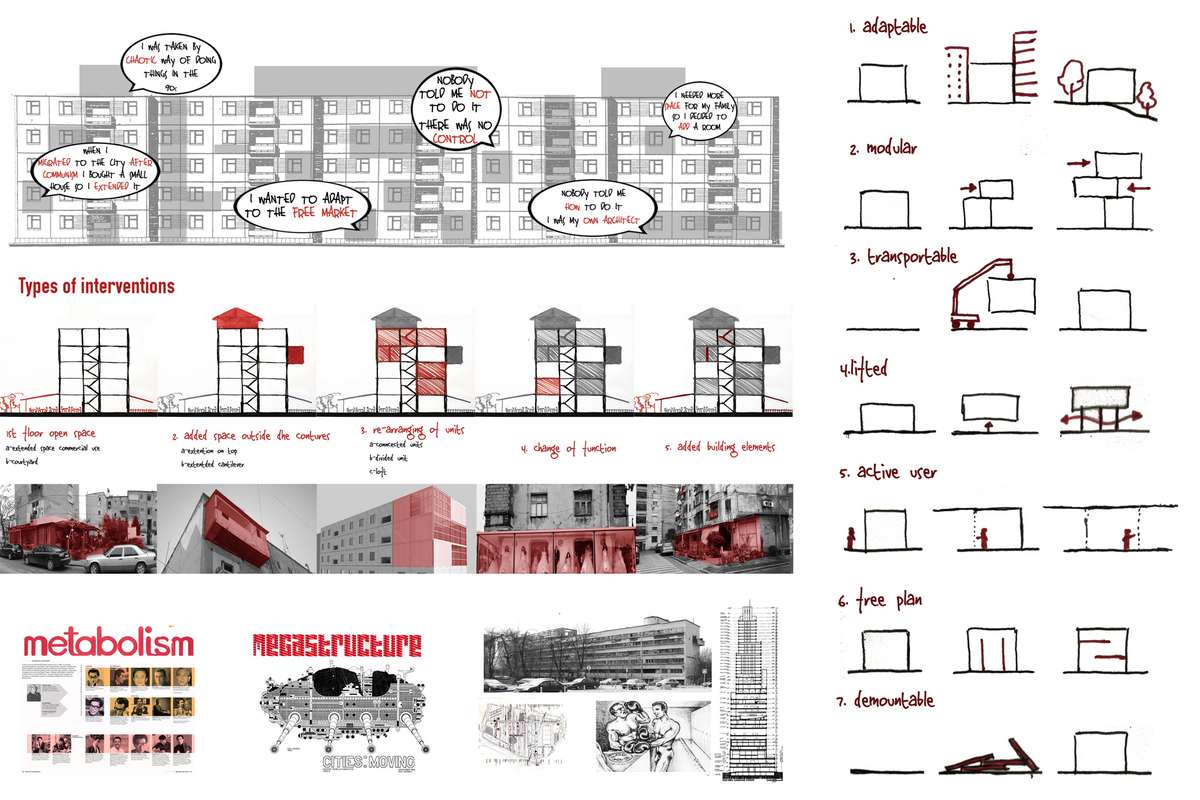
Analysis of the parasitic architecture and spontaneous interventions of the citizens to change their apartments. Divided in 5 categories of transformations, the results share the same key words like: adaptable, modular, transportable, lifted, active user, free plan & demountable. These are characteristics of the concepts of proposals from Metabolism and Megastructures visionaries in the early 20th century.
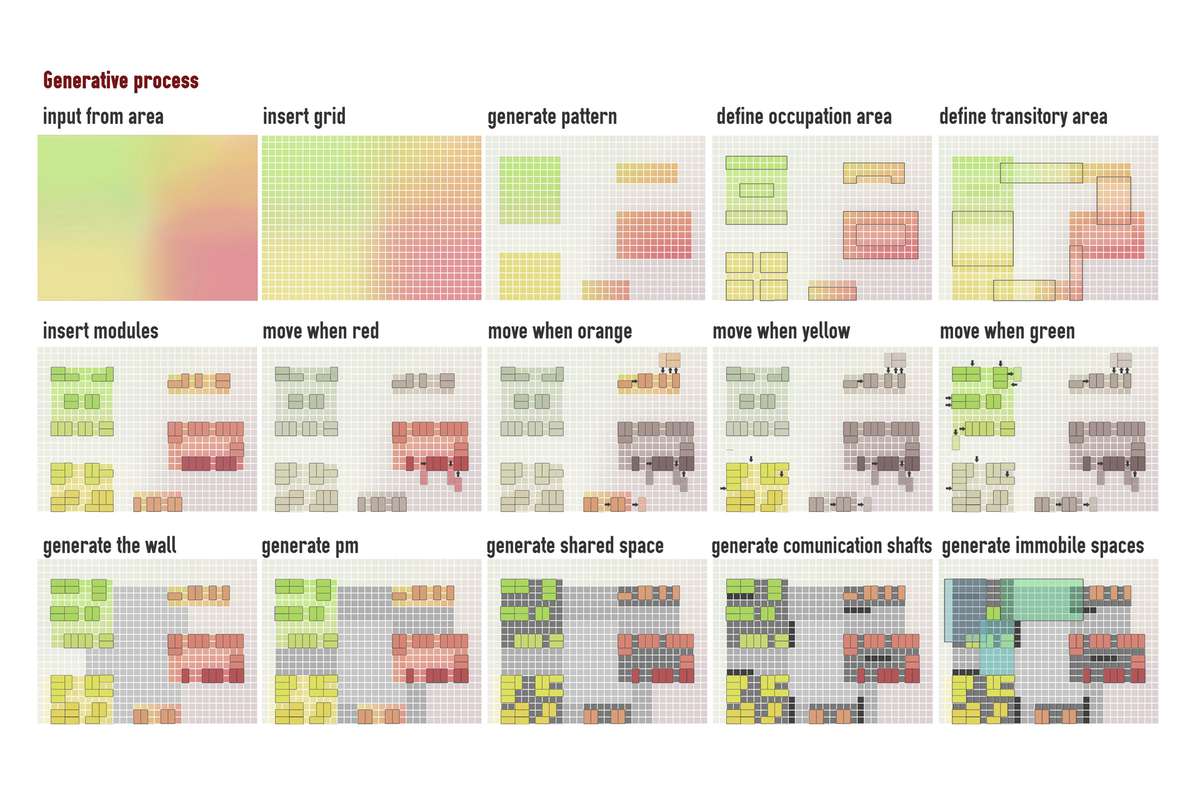
The distribution of the plan takes its first inputs from the area, which generates a system of cells that can be moved, removed and combined with each other to create new scenarios. A Social Condenser, aims to create different types of spaces, each of them in a different scale of public and private, giving to the users many ways of socializing. The scheme shows the positioning of the modules and their overlapping & connection with the shared spaces located on different floors of the building.
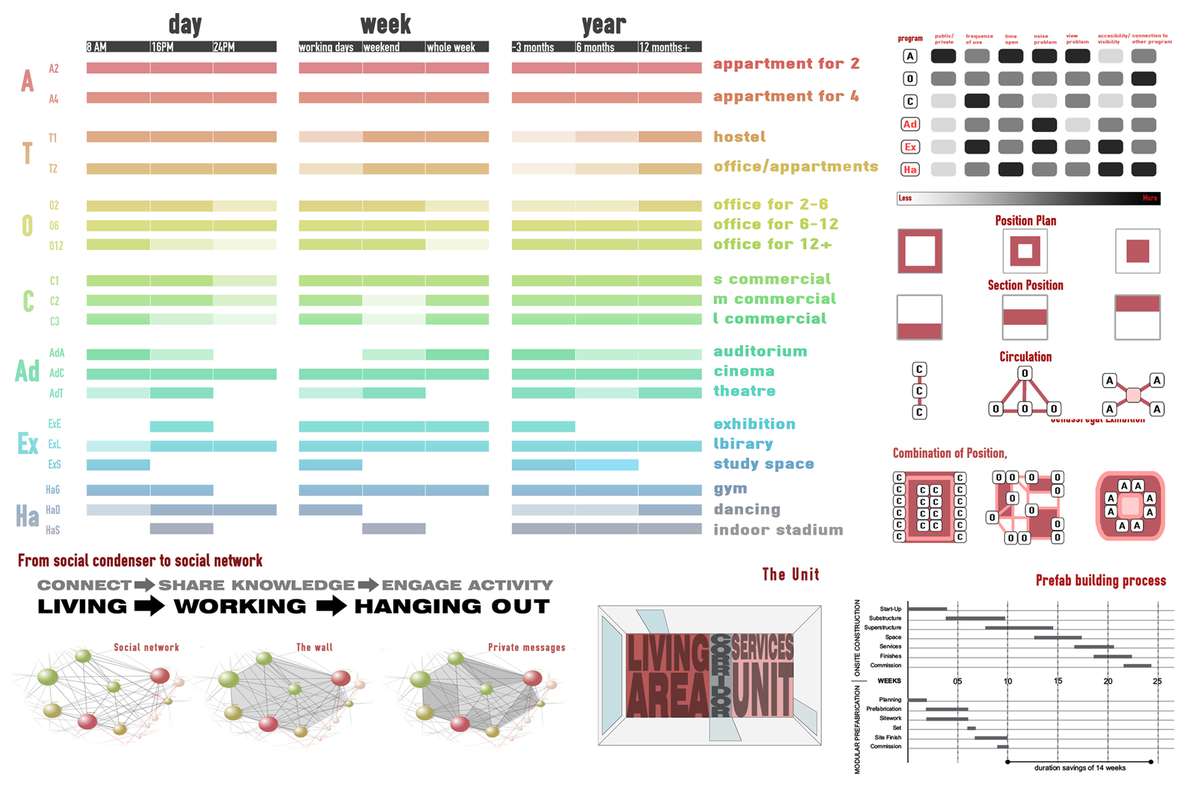
The variety of functions of the building go through a filter of time analysis, to have efficient usage of the space and fill the gaps in the program. The topological filter allows each function to find the most suitable location in the building, giving it enough flexibility to be transformed in the moment that it's needed. Just like in social media, you can find different platforms of interaction: private messages, group chat or the wall (the most public and visible platform).
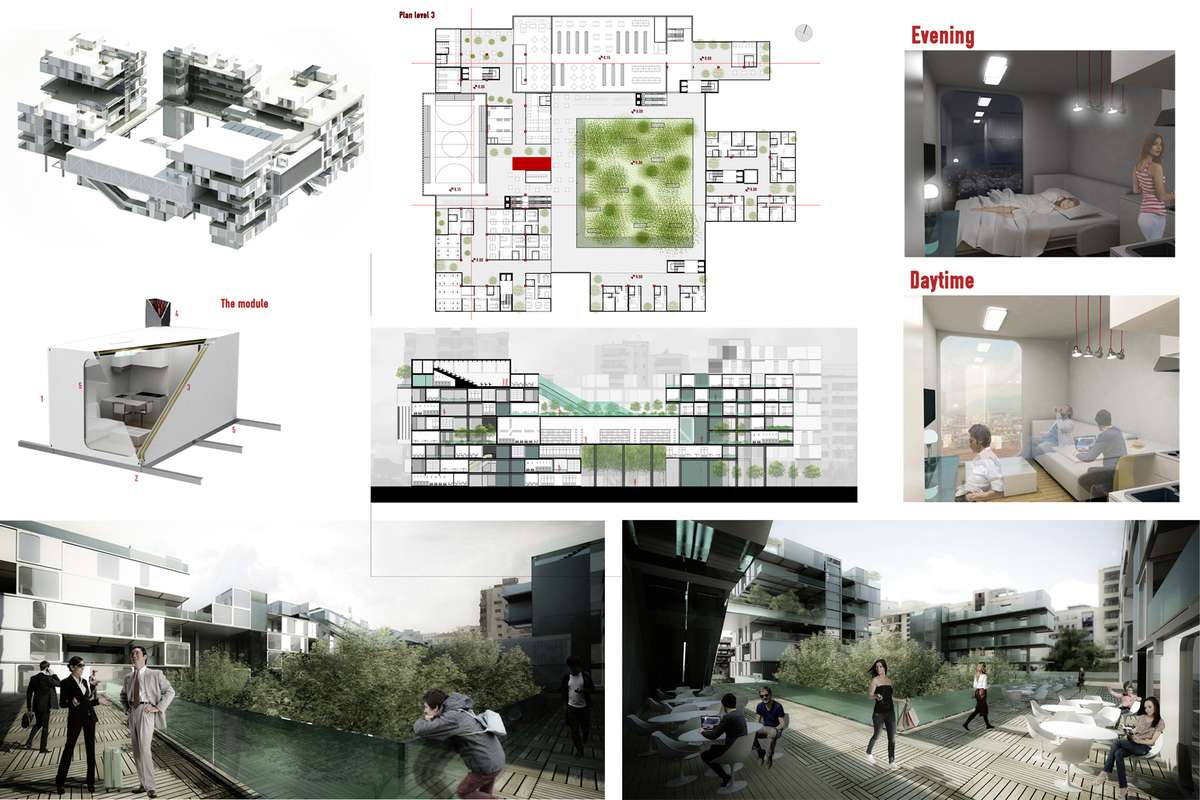
Connection to the nature is the key of social interactions, giving to the user a more comfortable environment to exchange. The wall, a platform located 10 meters above ground is the place where each of the functions meet and the services are located. Its center is hallow allowing a mini-forest to grow in the core of the building. The final typology outcome is a mix of: tower, blocks, superposed, perforated and courtyard.
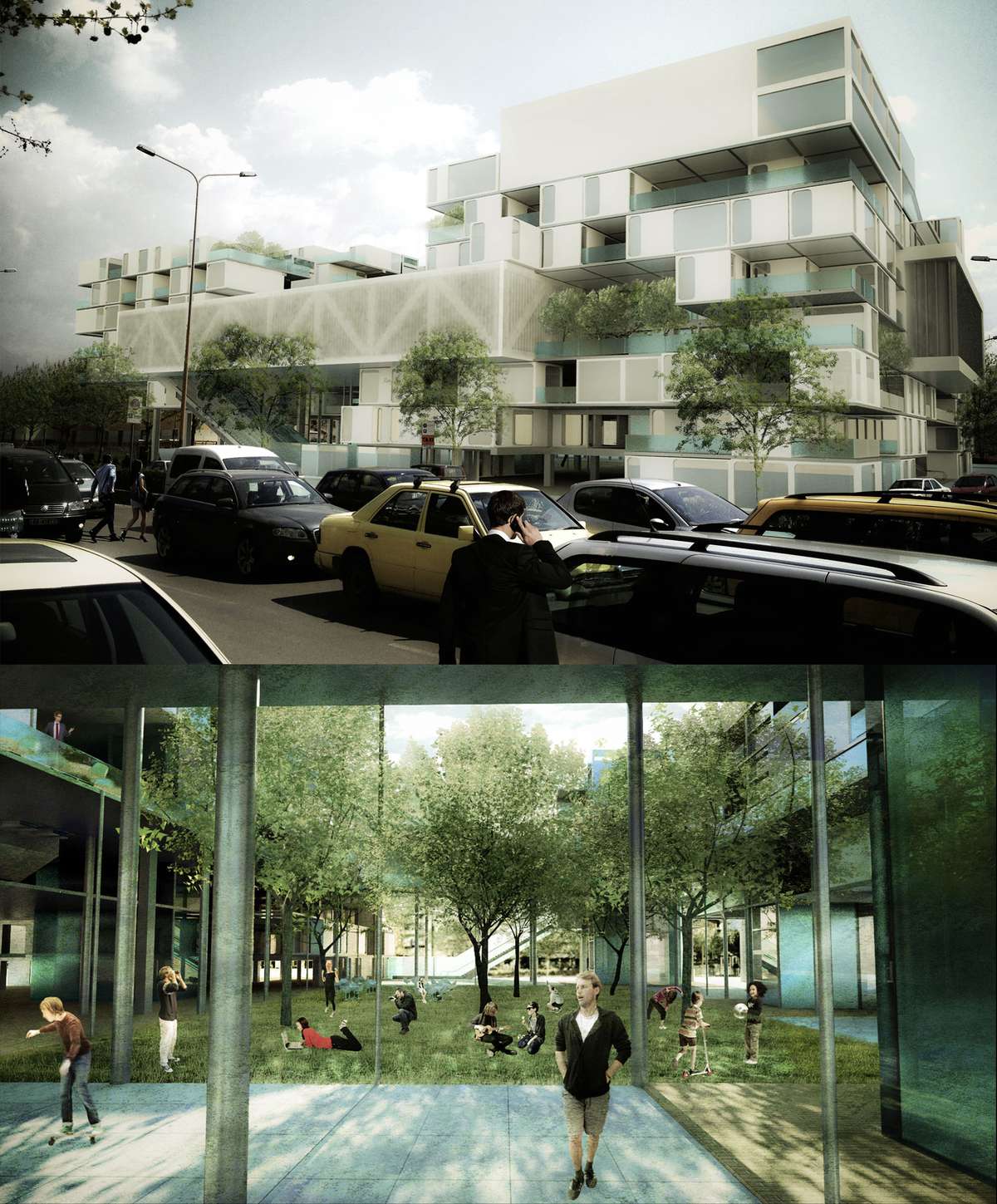
The final result is a composition of removable modules, laying on the empty areas and combined with the shared spaces . The only fixed elements are the communication system and 3 spaces which can not be removed, but the space inside of them can be transformed. They also give a visual and spatial hierarchy to the building, providing also public functions for the community.
Flexibility as a Social Condenser
Flexibility as a Social Condenser

This project/idea starts with an analysis done on the parasitic architecture that happened in Tirana in the 90’s. The aim is to create a new style of building based on what happened before and trying to understand what might happen. The result will accomodate very needed change will not create chaotic situations but live in harmony with the environment.
The buildings in the city changed and they went through a process similar to the theories produced by movements like Metabolism. Form and function are not fixed. The overlapping of program layers and flexible activities that can be found in the Social Condenser theories. The result is a Hybrid building in terms of typology and function.
This type of building will give to the city a new model with costs savings, prefab building techniques, active user and new ways of socializing. The final shape is not important since there is no such thing. The building is in constant construction, and the key factor is the user needs.
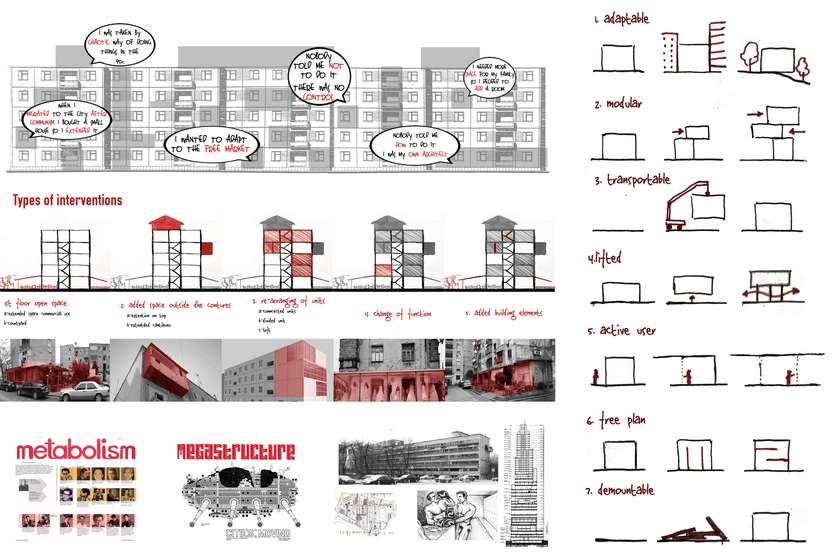
Analysis of the parasitic architecture and spontaneous interventions of the citizens to change their apartments. Divided in 5 categories of transformations, the results share the same key words like: adaptable, modular, transportable, lifted, active user, free plan & demountable. These are characteristics of the concepts of proposals from Metabolism and Megastructures visionaries in the early 20th century.
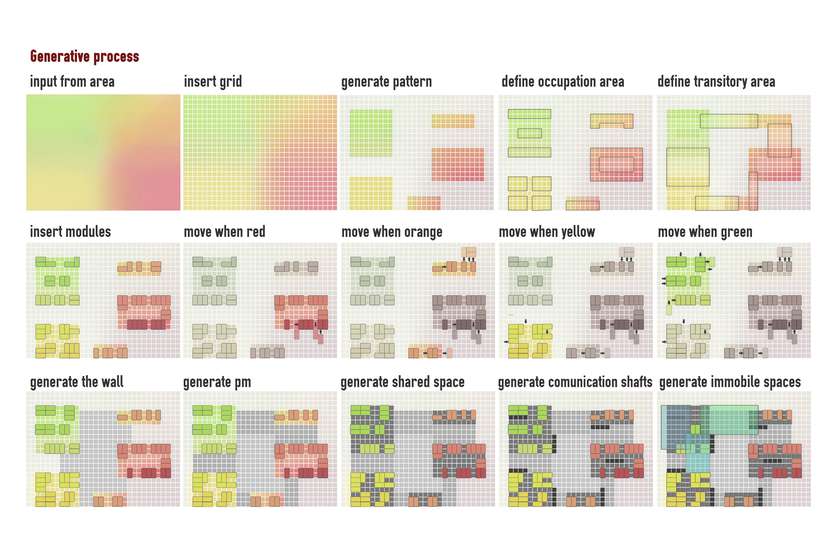
The distribution of the plan takes its first inputs from the area, which generates a system of cells that can be moved, removed and combined with each other to create new scenarios. A Social Condenser, aims to create different types of spaces, each of them in a different scale of public and private, giving to the users many ways of socializing. The scheme shows the positioning of the modules and their overlapping & connection with the shared spaces located on different floors of the building.
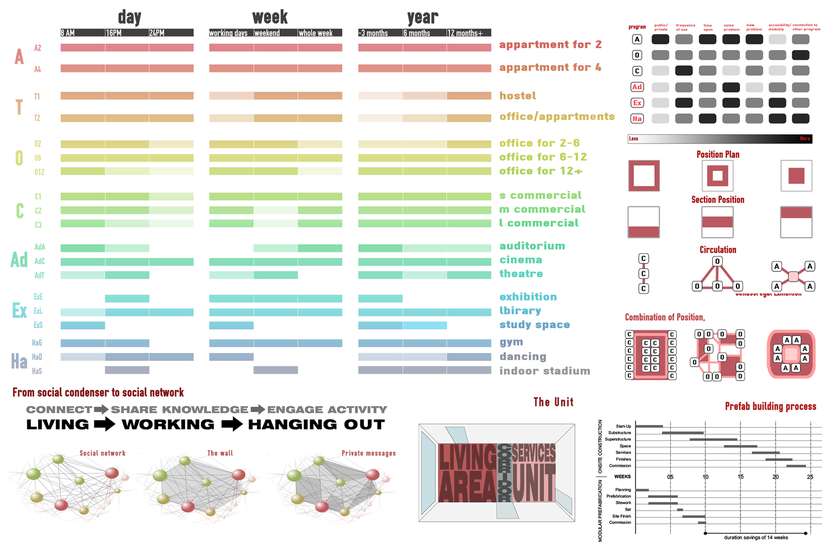
The variety of functions of the building go through a filter of time analysis, to have efficient usage of the space and fill the gaps in the program. The topological filter allows each function to find the most suitable location in the building, giving it enough flexibility to be transformed in the moment that it's needed. Just like in social media, you can find different platforms of interaction: private messages, group chat or the wall (the most public and visible platform).
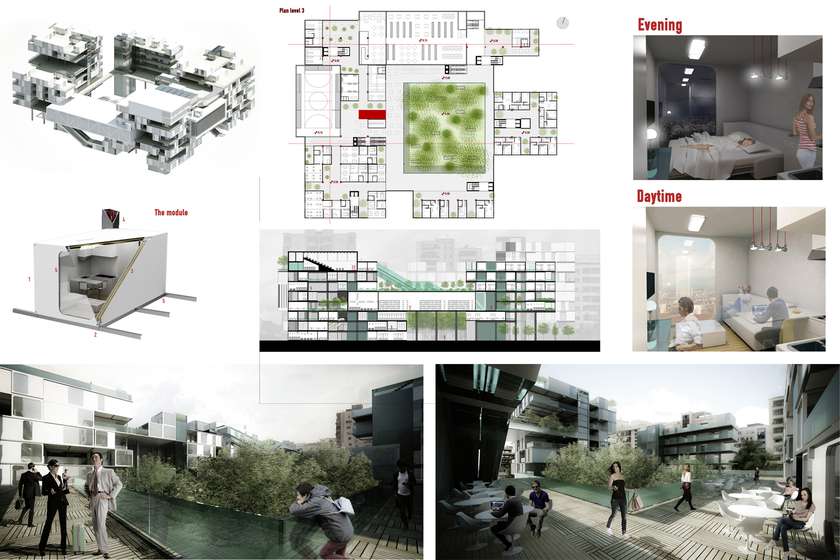
Connection to the nature is the key of social interactions, giving to the user a more comfortable environment to exchange. The wall, a platform located 10 meters above ground is the place where each of the functions meet and the services are located. Its center is hallow allowing a mini-forest to grow in the core of the building. The final typology outcome is a mix of: tower, blocks, superposed, perforated and courtyard.
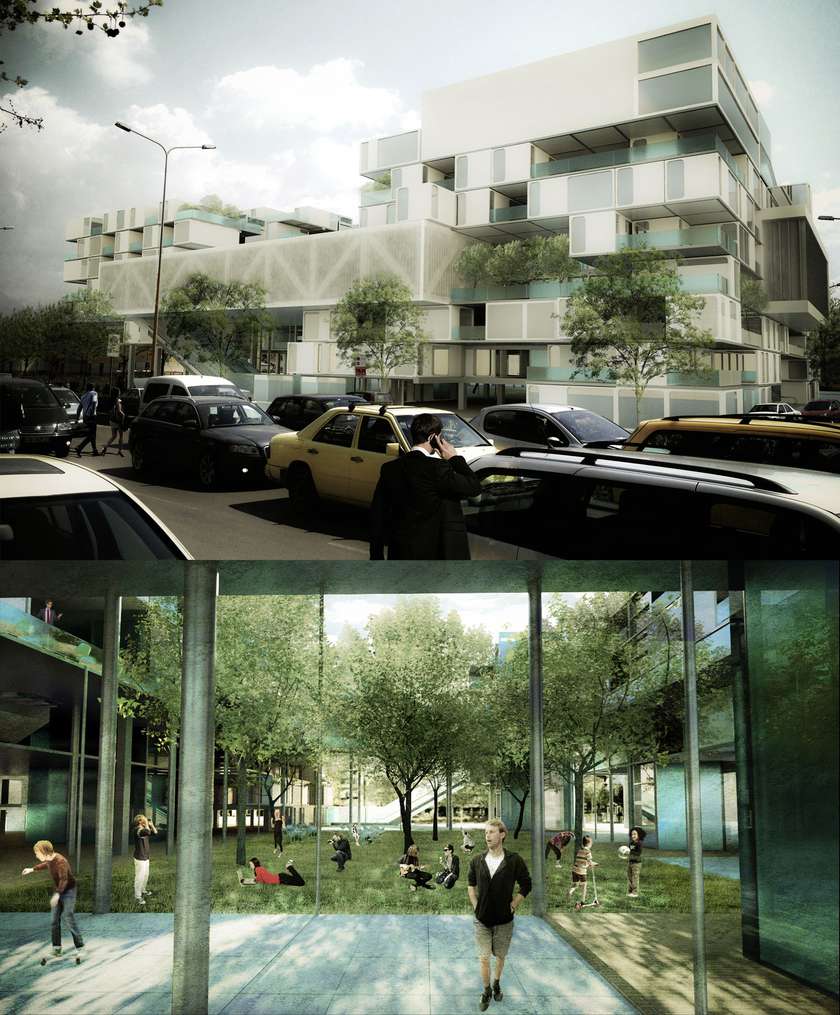
The final result is a composition of removable modules, laying on the empty areas and combined with the shared spaces . The only fixed elements are the communication system and 3 spaces which can not be removed, but the space inside of them can be transformed. They also give a visual and spatial hierarchy to the building, providing also public functions for the community.